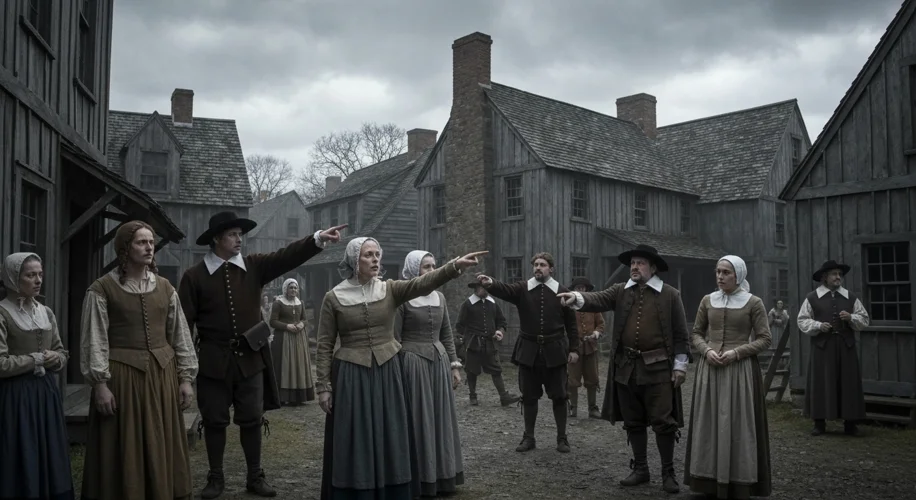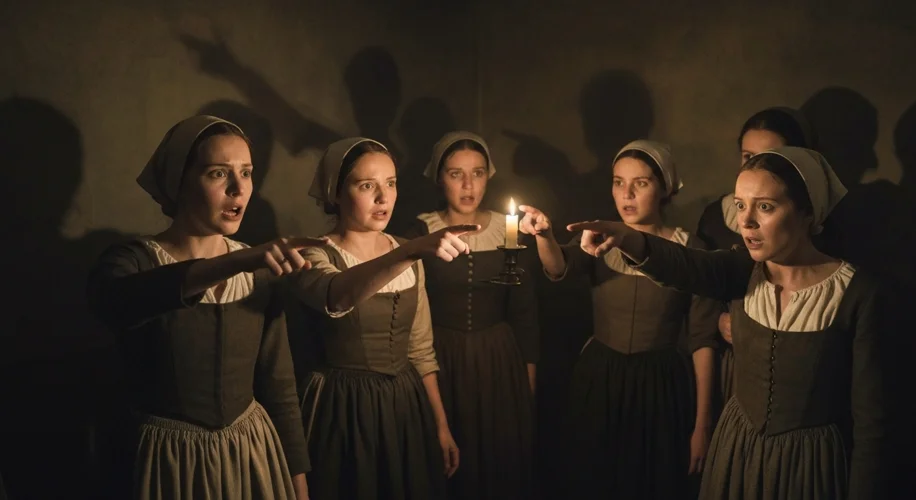The year is 1692. The small Puritan settlement of Salem, Massachusetts, a place where religious fervor and the harsh realities of frontier life intertwined, was about to become the stage for one of the most infamous chapters in American history: the Salem Witch Trials.

The air in Salem Village was thick with a unique blend of devout faith and gnawing anxiety. Life was precarious. The constant threat of disease, the unforgiving New England winters, and the ever-present possibility of conflict with Native American tribes fostered a deep sense of vulnerability. Into this fragile environment, a wave of unusual afflictions swept through a group of young women. They began to experience fits, contortions, and what appeared to be supernatural torments, screaming and writhing as if under unseen attack.
The prevailing worldview of the time offered a clear explanation for such disturbances: witchcraft. In 17th-century Puritan society, the Devil was a tangible force, constantly seeking to undermine God’s work. Witches were believed to be individuals who had made pacts with Satan, granting them malevolent powers. These afflictions, therefore, were seen not as psychological or medical issues, but as the direct result of demonic influence, orchestrated by earthly agents.
Key figures soon emerged in this unfolding drama. The afflicted girls, led by the young Abigail Williams, became the primary accusers. Their testimonies, often vivid and dramatic, painted terrifying pictures of spectral attacks. They identified the alleged perpetrators, often respectable members of the community, pointing fingers at women, and sometimes men, whom they claimed were tormenting them in their spectral forms – invisible to all but the accusers.
Among the first to be accused was Tituba, an enslaved woman of South American origin who served Reverend Samuel Parris, the minister of Salem Village. Her initial confession, likely coerced and perhaps influenced by her own cultural background and the intense pressure, fueled the ensuing hysteria. Other accused individuals included Bridget Bishop, Sarah Good, and Rebecca Nurse. Bishop, known for her contentious nature, was the first to be executed, hanged on June 10, 1692.
The trials themselves were a grotesque mockery of justice. The Court of Oyer and Terminer, established specifically for these trials, admitted spectral evidence – the testimony of the accused’s spirits – as valid proof. This meant that if an afflicted person claimed to see the accused’s specter tormenting them, it was considered a direct sign of guilt. Defense lawyers were scarce, and the accused often found themselves facing a tribunal already convinced of their guilt. Confessions, even if extracted under duress, often led to imprisonment rather than execution, creating a grim calculus for survival.
The accusations, fueled by fear and a desperate need to find an explanation for their suffering, spread like wildfire. Neighbors accused neighbors, family members turned on each other. Social rivalries, economic disputes, and personal animosities were often masked by the language of witchcraft. Those who dared to question the proceedings or defend the accused often found themselves targeted as well. Giles Corey, an elderly farmer, famously refused to enter a plea and was pressed to death with heavy stones, his last words reportedly being, “More weight.”
As the trials progressed, the sheer volume of accusations and executions became increasingly difficult for some to stomach. The number of accused swelled to over 200 people, and 19 were hanged, while several others died in prison. The colony’s governor, Sir William Phips, whose own wife had been accused, eventually halted the trials in October 1692. A new Superior Court of Judicature was established, which disallowed spectral evidence. This shift in legal precedent led to acquittals and eventually, a broader re-examination of the entire affair.
The aftermath of the Salem Witch Trials was marked by a profound sense of regret and a desire to atone for the injustices committed. In 1697, the Massachusetts Bay Colony held a day of fasting and soul-searching. Many of the judges involved publicly apologized for their errors. Over the ensuing years, efforts were made to reverse the attainders (the legal disqualification of a convicted felon) and compensate the victims’ families. By 1711, the General Court of Massachusetts had passed an act restoring the names of those wrongly accused.
The Salem Witch Trials remain a stark reminder of how fear, mass hysteria, and a rigid, unquestioning adherence to ideology can lead to devastating consequences. They serve as a powerful historical case study in the dangers of unchecked accusations, the importance of due process, and the fragility of justice when confronted by the powerful forces of panic and prejudice. The whispers of the accused, silenced by the gallows, echo through centuries, urging us to remain vigilant against the shadows of injustice that can so easily engulf even the most devout communities.

